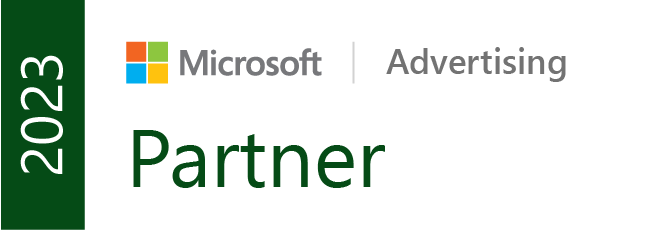
You, a performance marketer, might find traditional advertising channels, known for their broad targeting, to be inefficient(i did). Yet, when it comes to your own facebook or google campaigns, you’re perfectly fine targeting as broad as possible?!
Digital advertising surpassed traditional media spending in 2019. Despite this shift being propelled by the promise of personalized and laser-targeted ads, we find ourselves in a reality where most social ads use broad targeting (SEM is joining to the party as well), almost bypassing personalization?
Just like you, I find myself in a conundrum. Even with the myriad of targeting options available on Google & Meta, I, along with a majority of accounts, often choose the broadest targeting possible. What’s the secret behind this approach that seems to defy logic, and why do we find ourselves navigating this contradiction?
On May 10, 2018, Google’s CEO Sundar Pichai took to the stage at the Google I/O conference and extolled the virtues of personalized advertising, emphasizing how AI and machine learning could create “more relevant experiences for users.” Similarly, on April 10, 2018, Mark Zuckerberg, in his testimony before the Senate, touted Facebook’s ability to offer “relevant content” through personalized advertising.
These affirmations seemed like the natural progression of digital advertising – precise, personalized, and powerful. Yet, despite these endorsements, both platforms began steering advertisers towards broader targeting options.
Advertisers were confused. Why were these tech giants publicly championing the benefits of personalization and precision, while simultaneously advising advertisers to embrace broad targeting? It seemed like a stark contradiction: telling the public one story about personalized, relevant experiences, and guiding their customers, the advertisers, down a seemingly divergent path.

One possibility that marketers considered was the advancement in algorithms. Had Google and Facebook’s algorithms become so sophisticated that they could accurately identify the right audiences within a broad spectrum? This was certainly part of the story, as both platforms had made significant strides in machine learning.
However, this explanation raised another puzzling question. If the algorithms were indeed so advanced, why did they seem to perform better with broad targeting and struggle when the parameters were narrowed down? After all, advertisers, with their intimate understanding of their businesses, could identify extremely relevant audiences and content that should, in theory, lead to successful campaigns.
The conundrum was perplexing: why would a broad campaign, ostensibly less tailored to the brand, consistently outperform a campaign that was meticulously crafted to target a specific and highly relevant audience? Shouldn’t AI be equally effective in both broad and narrow targeting scenarios?
This discrepancy invites a closer look into the psychological factors at play in advertising.
Want to brainstorm with our team on new ways to scale your business with YouTube Ads (and other performance video platforms)?
Join us for a free YouTube ad brainstorming session 👇
Robert Cialdini and his team delved into research examining the influence of sexual and threatening stimuli in advertising, seeking to understand why some ads, even if seemingly compelling, can unexpectedly lead to negative outcomes. They theorized that humans, when exposed to threatening situations, instinctively seek safety in numbers, while in a context of sexual possibilities, they desire to stand out.
To test this, they crafted two ads for San Francisco’s Museum of Modern Art. One emphasized the museum’s popularity (“Visited by over a million people each year”), and the other its distinctiveness (“Stand out from the crowd”). They then showed these ads to people who had been watching either a violent or a romantic movie.
The results were striking: those watching the violent movie responded positively to the popularity message, seeking safety in numbers. Conversely, those watching the romantic movie favored the distinctiveness message, wanting to stand out. Cialdini’s experiment underscored how the effectiveness of an ad can hinge on the context in which it’s presented, demonstrating the importance of aligning the ad’s message with the audience’s mindset.
On a different note, TV and radio stations have utilized ‘traffic persons’ for almost a century. Their job is to strategically position advertising spots to ensure that an ad is not aired too closely to a direct competitor’s ad. For instance, placing a VW ad right after a Nissan ad is considered a significant error. This practice underscores the importance of context from a different angle: the sequence and placement of ads relative to each other and to the content they accompany.
These two examples are still true today; however, one thing has changed. You no longer have a way to control the context in which an ad is served. Context is holly grail, and black box of every AdNetwork out there.
Linear television allowed advertisers to strategically plan their ads around specific programming, which was fixed and planned. However, digital operates differently; an end user can change what they want to watch/consume in an instant, making it challenging to predict and control the context in which an ad is viewed. Predictability of programming had to be changed by predictability of consumers. Consumer becomes the product.

When networks managed to amalgamate sufficient data and construct models predicting user behavior based on the ads served, there was a significant uptake in the adoption of their smart bidding strategies. The emphasis on creative production meant that, with the advent of NLP, networks could comprehend an ad and serve it to the right contextual and behavioral cohort. What had been scattered for nearly 15 years was now modeled.
In the context of a model, a narrow approach resonates with fewer opportunities, while a broad one encompasses more.
Consider it this way: if a Facebook user is the product, you’d want to allow Facebook to present your offering to all potential consumers, letting the algorithms decide who is most likely to engage. It’s that simple.
As we still make decisions, our tendency to seek safer choices (precision targeting) while being limited in knowledge (not fully understanding the context in which an ad is served) can lead us to opt out of more opportunities, even on surface that might seem completely logical.
Given the nature of the data collected, it’s clear that we’ll likely never fully understand the extent of it. As a result, networks know more about our customers than we do. In pursuit of performance, we’ve traded control and understanding, focusing on the bottom line rather than the journey there.
We live in a world where we know something is working, yet we don’t really understand why. And due to the nature of the process, we might never know. Models are open source, but the underlying data is not and likely never will be. When we don’t have all the information, we opt for what is satisfying. Broad seems to be that. At least for now.
Want more content like this?
Don’t miss out on the latest news and updates from the world of Direct Response advertising! Subscribe to our newsletter today 👇

Brat Vukovich,
Co-Founder of Inceptly and VidTao
Want to brainstorm with our team on new ways to scale your business with YouTube Ads (and other performance video platforms)?
Join us for a free YouTube ad brainstorming session 👇
Like this post? Let's continue the conversation!
Get in touch with us by shooting us a quick email or tagging us on LinkedIn or Instagram, and sharing your thoughts. Your feedback helps us keep our blog relevant and interesting.
Get Our Newsletter
Need Help?
Get in touch with us for an insightful evaluation of your ads + actionable tips to help amp up your direct response revenue



